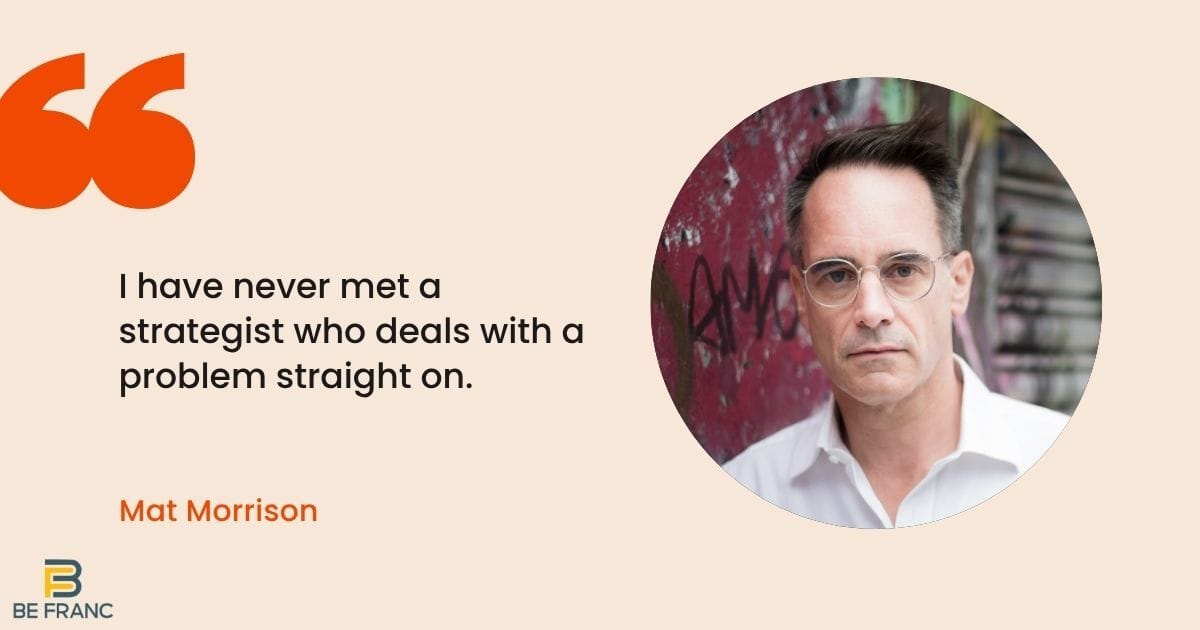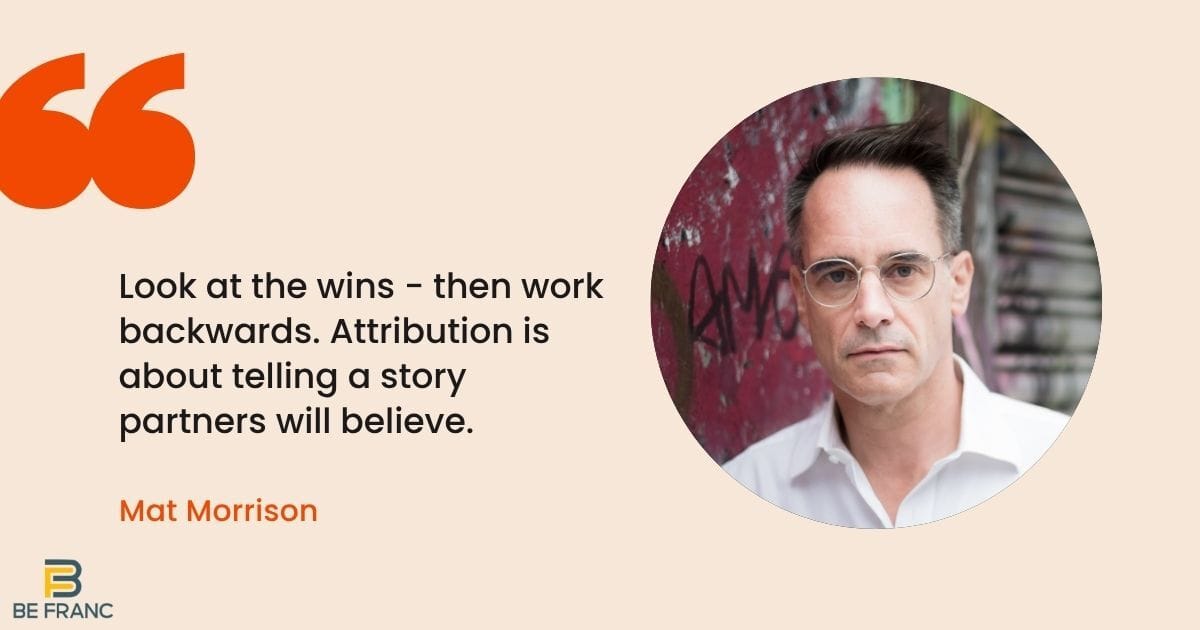Your Voice AI Guidebook is Here
Thinking about Voice AI for your contact center? Discover how leading contact centers are making smarter Voice AI decisions.
This guide walks you through the key trade-offs between vendors and model types, shows how to reduce latency and cut inference costs, and outlines how to deploy a fully optimized solution in just weeks—not months.
Whether you're building or buying, get the clarity you need to move fast and scale with confidence.
Hello there, and welcome to all new subscribers. 👋
Thanks for signing up - I hope you enjoy what you find here.
Plenty to get stuck into this week across business, marketing and tech.
First up, a few standout reads from across the web. Then, my conversation with Mat Morrison, Head of Strategy at Digital Whiskey, where we dig into digital strategy, flawed attribution, and the impact of AI on how we think and work.
📖 What I have been reading this week in business, marketing & tech
- Claude System Prompt Leak: SEO Impact
- Homepage Traffic is Up 10.7% from AI Overviews and LLMs
- GSC’s Huge Search Gap
- Google Play Store optimization: the ultimate guide for Android apps
- Schema Markup vs No Schema: A Real ChatGPT Experiment
- Google DeepMind’s CEO Thinks AI Will Make Humans Less Selfish
- “Yes; (Google Sucks) AND…” – The Off-Site Reasons Why Organic Is Dropping Across the Board
- How AI Mode works
- AI eats the world
- Anthropic hits $3 billion in annualized revenue on business demand for AI
👆 Tap-worthy reads from this week.
My discussion with Mat Morrison on Digital Strategy in an AI world
I joined Starcom in 2013 - what feels like a lifetime ago. It was my first job in media after seven years at a small independent agency, where I cut my teeth in SEO having joined from University. At 30, it was all I had known.
Going from a close-knit team to one of the agency groups was both daunting and eye-opening. I turned up at Whitfield Street, just behind Goodge Street station - an office that’s since been flattened (now flats), with the company now based in White City by way of Farringdon.
Until then, I’d only ever worked in SEO. Suddenly, I was surrounded by teams talking about TV, paid social, and affiliates – channels I’d actively avoided before. My view was narrow: SEO was my thing, so why stray?
But Starcom changed that. It opened me up to the broader marketing ecosystem, gave me a clearer understanding of the customer journey, and helped me sharpen my SEO performance through a wider lens. I was also handed the reins to grow the P&G account – which I did over the next four years, alongside a brilliant team.
Starcom was where my curiosity around why people buy things really kicked in. I had access to proper audience insight tools and better connections with tech vendors like Google and Amazon – which meant I could finally ask the probing questions I’d been sitting on.
We also had a pub in the building - The Pregnant Man - subsidised and exclusive to Publicis staff. I don’t drink alcohol anymore, but I definitely made the most of a few too many media Thursdays in there.
|
Between long days on P&G and a few too many Thursday nights (did I mention Heineken was a client, and beer fridges weren’t exactly in short supply?), I had a front-row seat to some seriously top marketers. One of them was Mat Morrison.
Back then, he was Starcom’s Social Media Director - a role that sat somewhere between educator and translator. He helped clients navigate where and how to integrate platforms like Facebook, Instagram, and Twitter (as it was then) into their broader marketing plans.
What impressed me most was how much he knew - not just about the platforms, but about the analytical tools behind them. He’d pull insight from analytics dashboards I’d never seen and turn it into clear, actionable strategy for clients like UBS, Honda, and Nissan.
Mat was always polite, intense (in the best way - I am too), and razor-focused on the craft. He cared about doing the work properly, not just ticking boxes.

He now heads up strategy at Digital Whiskey - a boutique media planning and ad agency built specifically for professional-services firms: law, accounting, consulting. I was delighted when he agreed to chat about the strategist’s mindset, what clients still get wrong, and how AI is reshaping the way we work and think.
Check it out below.
Digital strategy in 2025
In digital strategy, few voices are as grounded and irreverently sharp as Mat Morrison. Whether he’s reverse-engineering audience behaviour or breaking down the philosophical traps of attribution modelling, Mat doesn’t just play the game, he redesigns the board.
In this conversation, the Digital Whiskey Strategist and media veteran opens up about the structural flaws in B2B marketing, why professional services are their own bizarre ecosystem, and how generative AI is changing how we all think (and sometimes forget to think).
We go deep on client psychology, media evolution, targeting trade-offs, zero-click futures, and what it means to be a strategist in a world obsessed with tools over truths.
Beginnings and Obsessions
Mat’s journey began in the CD-ROM era, transitioning into the world of websites just as the internet was taking off. "I became obsessed by this problem: what was going to happen when we ran out of websites?" he recalls. A naive question, perhaps, but one that catalysed decades of experimentation. From pioneering banner ads - "I was the first person who paid pounds for a banner" - to founding an agency of his own, Morrison’s path has always been defined by a hunger to decode the next big shift in communication.
His current focus? Professional services. "These are weird businesses," he says, bluntly. "Lawyers, accountants, management consultants - they don’t think or act like traditional marketers."
Digital Whiskey was born out of that peculiarity. It’s a media-first, data-driven agency built for a client base that defies easy categorisation - and one that’s forced Morrison to rethink everything he knew about marketing outcomes.
Diagnosis Before Prescription
When a new client walks in with a complaint, Mat rarely treats the symptom. "Our audience growth on LinkedIn isn’t fast enough," they’ll say. But instead of tweaking posts or running ads, Mat zooms out. "I have never met a strategist who deals with a problem straight on."
What follows is a process of diagnosis that often confronts clients with inconvenient truths. "Almost always we can show them a picture of what’s happening that runs counter to their assumptions."
Take LinkedIn. "They want to grow their audience to drive traffic to their site - but they're posting links, which the platform doesn’t like. Or they think they're talking to clients, but it's actually students, competitors, or their own staff engaging with the posts."
His approach blends hard data with a deep understanding of human behaviour. It's not just about what the data says - it's about unpicking the motives, rituals and misalignments inside an organisation.
"The problem is rarely where they think it is."

Strategic Arrogance vs. Client Reality
He admits they used to start with arrogance. "We thought: we can see the real problem. You’re wrong. We’re right."
That posture got attention - but not repeat business. "Clients liked working with us, but it wasn’t useful for keeping them. So we had to step back."
Eight years in, they’ve found a rhythm. Productised services. Repeatable diagnostics. A clear sense of what they want clients to understand: stop treating your website as a sunk cost; start thinking about how to reach your audience elsewhere.
"Unless you're a publisher or e-commerce brand, there’s often no real value in traffic to your site. It's a lot easier to reach people in the environments they already trust."
Media: From data dreams to budget trades
We shift to how media has changed. The optimism of the early digital age gave way to a more sobering reality.
Back in the 2000s, digital promised to solve what TV never could - perfect targeting, cross-device tracking, and crystal-clear attribution. That promise didn’t hold.
But then came platform dominance, privacy pushback, and the blunt realisation: more data doesn’t mean better decisions.
"The consultancies outgrew the agencies. We stopped being about craft. We tried to become tech companies. That was a really bad meta change."
Now he sees media as a trade-off game - reach vs. relevance, waste vs. accuracy.
"We’re always trying to make it look like we’re spending like millionaires - but actually we’re budget managing every inch."
He likens it to WWII bombing strategies: the British flew high to lose fewer planes; the Americans flew low with more accuracy. Both achieved the same objective - just differently methodologies.
Attribution, budgets, and the realities of B2B
In professional services, proving value is the marketing team’s biggest challenge.
"Any money spent on advertising is money that doesn’t go into the partner’s bonus."
That creates a fundamental tension. His answer? Borrowing a trick from Google.
"Look at the wins - then work backwards. Attribution is about telling a story partners will believe."
Forget leads. These firms don’t hand over email lists to partners. So they’ve pivoted to domain-level analysis, surfacing the right IP-level activity and building a cohesive story using Lead Forensics, LinkedIn data, and lightweight CDPs.
"ZoomInfo we hate," he says. "It’s not just the pricing. It’s that they’re not geared towards the kind of attribution and data capture we need."

The Strategist’s toolkit
I ask what tools he can’t live without. The shortlist:
Supermetrics: "Worrying how much we run on it."
Looker Studio: for clean client reporting.
Jupyter Notebooks + RStudio: his nerdcore setup.
PhantomBuster: "If they ever go down, I’ll cry."
He uses PhantomBuster to analyse LinkedIn audiences at scale. "We look at who’s liking and commenting on your posts - and 90% of the time, it’s not your clients. It’s students, competitors, your own staff, or alumni."
That kind of insight can rewire a strategy instantly.
AI and the New Discovery Layer
Mat’s relationship with AI tools isn’t hype-driven - it’s functional. He uses ChatGPT not to just get answers, but to sharpen his thinking.
"One of the best ways I’ve found to approach strategy is to ask ChatGPT what it thinks - and then ask myself why that’s wrong."
He sees large language models as mirrors, not oracles. "ChatGPT gives you a great summary of what everyone else thinks. It’s a good place to start - if you want to do the opposite."
That shift from search to synthesis has changed how he learns, too. "I now have a code window open with ChatGPT on one side. That’s my learning process. I’m not watching Power BI videos. I’m asking GPT and trying things."
But there’s danger in over-reliance. "LLMs hallucinate. They get it wrong - but do it so fluently, so confidently. That’s dangerous."
His antidote? Skepticism. “I’m such a skeptical bugger - I check what I say, let alone what anybody else says.”

Final Thought
For Mat, strategy isn’t about going down the conventional route - it’s about being useful. "I’ve become fuzzier over the years. Less obsessed with triangles and frameworks. Now, I just look for the thing that doesn’t fit. That’s where the insight is."
And that’s where the real strategist lives - in the uncomfortable 10% the data didn’t explain, in the misfit ideas that challenge the brief, and in the ability to say, calmly: this isn’t the right question - let’s start over.



